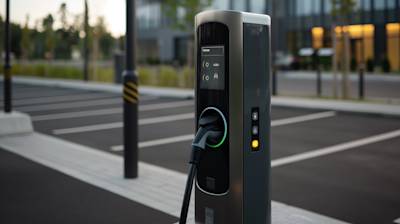The world is evolving at an incredibly fast pace, and with it comes increasing technological advancements designed to make our lives easier. A key development in this area has been the invention of the occupancy sensor. These intelligent devices have found widespread use in numerous applications, from residential and commercial lighting systems to security systems and HVAC controls. Occupancy sensors have become the go-to energy saving solution in our modern society.
Understanding the Occupancy Sensor
An occupancy sensor, also known as a presence or motion sensor, is a device that detects the presence of people in a specific area and, based on the information gathered, controls different equipment. For example, the most common use of this device is for controlling lights. The sensors detect human presence in a room and then turn the lights on, and turn them off when the area is vacant. This basic functionality is at the core of why occupancy sensors are commonly used to conserve energy and improve security, both at residential and commercial levels.
How Occupancy Sensors Work
While it might seem like there’s magic behind their operation, in reality, occupancy sensors operate based on fairly straight-forward principles. There are two main types of occupancy sensors depending on the detection technology used; PIR (Passive Infrared) and ultrasonic sensors. PIR sensors detect heat emitted by any moving person or object, while Ultrasonic sensors use high-frequency sound waves to detect movement. These sensors continuously monitor the controlled area and switch the lights or other systems off or on based on the presence or absence of people.
Types of Occupancy Sensors
- Passive Infrared (PIR) Sensors: These sensors detect the infrared energy emitted by humans in motion and activate the system connected to them (like lights or HVAC).
- Ultrasonic Sensors: These sensors emit high-frequency sound waves to detect movement. They are more sensitive compared to PIR sensors and do not require a line of sight to sense presence.
- Dual-Technology Sensors: These sensors combine PIR and Ultrasonic technology to achieve more accurate results.
Applications of Occupancy Sensors
Occupancy sensors have found applications in several sectors, thanks to their versatility and efficiency. The most widespread use of these devices is in dimming or switching on and off lights based on human presence. By doing this, they play a significant role in energy conservation. Apart from lighting systems, they also have a key role in heating, ventilation, and air conditioning (HVAC) systems where they are used to control temperature and ventilation within a building depending on occupancy.
Commercial Use of Occupancy Sensors
- Office Spaces: Used for managing lighting, heating, and cooling, depending on the presence of people.
- Gyms and Sports Facilities: Used to control lighting and temperature based on areas in use.
- Shopping Malls: Used to manage lighting and HVAC.
Residential Use of Occupancy Sensors
- Living Rooms and Bedrooms: Used for automated lighting controls.
- Hallways and Staircases: Used for safety, lighting up areas as people pass through.
- Bathrooms and Kitchens: Used for lighting control and sometimes managing underfloor heating.
Choosing the Right Occupancy Sensor
With a variety of occupancy sensors in the market, choosing the right one can be overwhelming. However, your needs and the specific use case should primarily guide this decision. Other factors that come into play include the size and layout of the space, the type of load (system) you want the sensor to control, and the sensor's sensitivity and range. By carefully considering these factors, you'll identify an occupancy sensor that fulfills your requirements and provides value for money.
In conclusion, the benefits of using occupancy sensors, from energy efficiency to improved comfort and security, cannot be overstated. As technology continues evolving, we are likely to see even more improvements in the design and functionality of these sensors to better meet our everyday needs. Understanding what these devices offer and how they work is, therefore, an excellent step towards adopting a smarter and more energy-efficient lifestyle.
Frequently Asked Questions About Occupancy Sensors
How does an Occupancy Sensor work?
An occupancy sensor works by detecting motion or presence within a specific area. It uses technologies like infrared, ultrasonic, or microwave sensors to perceive motion or heat signatures in the environment and triggers light or other connected devices.
What are the types of Occupancy Sensors?
There are mainly three types of Occupancy Sensors - Passive Infrared (PIR), Ultrasonic, and Dual-technology sensors. PIR sensors detect the infrared radiation emitted by a body when in motion; Ultrasonic sensors emit ultrasonic waves which are echoed back when a person moves in the area; Dual-technology sensors are a combination of PIR and Ultrasonic sensors.
Where are Occupancy Sensors used?
Occupancy sensors are widely used in both residential and commercial spaces. They are commonly found in office spaces, classrooms, restrooms, hallways, and home lighting systems for energy efficiency and convenience.
What is the difference between an Occupancy Sensor and a Motion Sensor?
While both sensors are used to detect movement, they differ in their functionalities. A motion sensor is used to detect any kind of movement in its range, whereas an occupancy sensor is designed to detect the presence of people in a particular space. Consequently, an occupancy sensor is more sensitive and is used to control more complex systems like lighting, HVAC, etc.
Can Occupancy Sensors work in the dark?
Yes, most occupancy sensors like Passive Infrared (PIR) and ultrasonic sensors can operate in the dark because they rely on infrared or ultrasonic signals rather than visible light.
How can Occupancy Sensors help save energy?
By turning lights or other devices on only when a room is occupied, and off when it is vacant, occupancy sensors can significantly reduce energy consumption. This is especially beneficial in large spaces like offices and commercial buildings where lights are often left on accidentally.
What is the average range of an Occupancy Sensor?
The range of an occupancy sensor can vary depending on the type and model, but it generally falls between 15-20 feet for residential spaces. For larger commercial spaces, high-capacity sensors might be used with a range of upwards of 30 feet.
Does an Occupancy Sensor require special installation?
Most occupancy sensors can be easily installed in place of a standard light switch. However, some models may require more complex setup involving electrical wiring. It is recommended to consult a professional installer for such cases or refer to the instructions provided by the manufacturer.
Can pets trigger Occupancy Sensors?
Yes, pets can trigger occupancy sensors based on their size and the sensitivity setting of the sensor. However, most sensors allow you to adjust their sensitivity, so you can prevent false triggers from small pets.
Do Occupancy Sensors work through glass or walls?
Passive Infrared (PIR) sensors cannot detect motion through glass or walls. However, some ultrasonic sensors can detect motion through certain materials, but their effectiveness might be reduced. It's best to install the sensor within the room for the best visibility.
Pros of Occupancy Sensors
Energy Efficiency
The major advantage of occupancy sensors is their ability to significantly induce energy efficiency. These sensors can automatically switch off the lights when no one is present in the room, thereby saving power. Major benefits are:- Saving in electricity bills: The use of these passive infrared (PIR) sensors considerably lower your electricity bills, as they prevent unnecessary use of lights.
- Reduced carbon footprint: By consuming less energy, occupancy sensors allow households and businesses to lower their carbon footprint, contributing to a sustainable environment.
Adaptability and Multiple Uses
Occupancy sensors can be deployed in various environments, from homes and restaurants to offices and conference rooms. Some uses are:- In hospitals: These sensors help manage lighting and air conditioning in patient rooms.
- In office spaces: They ensure lights and other electrical appliances are turned off after working hours.
Security Enhancement
Occupancy sensors enhance security in homes and commercial settings by triggering lights when movement is detected. This feature directly discourages trespassing and illicit activities.Cons of Occupancy Sensors
False Activations and Deactivations
A significant disadvantage of occupancy sensors is their likelihood of false activations and deactivations. Here are some cases:- Inactivity: The sensors may interpret inactivity, such as while reading or watching television, as no occupancy and turn off lights.
- Non-human triggers: Various non-human triggers like pets, or even shadows and reflections can result in the activation of these sensors.
Installation and Maintenance Costs
While occupancy sensors save on energy costs in the long run, they can be expensive to install, especially in large commercial or industrial buildings. Regular maintenance or replacement of faulty sensors can also contribute to the costs.Invasion of Privacy
There are concerns that occupancy sensors, especially ones with camera components for higher accuracy, may invade personal privacy. For instance:- In residential units: Some people may feel uncomfortable with the idea of being continuously monitored in their homes.
- In workplaces: Employees may consider the use of such sensors as an encroachment on their privacy rights.
Dependency on Power Supply
Occupancy sensors, like other electronic devices, depend on a power supply. In case of power outages, the functionality of these sensors is compromised, and manual intervention might be necessary to control lights and appliances.Conclusion
While occupancy sensors come with their set of advantages, including energy efficiency and enhanced security, they also have their own share of drawbacks which include false activations, high installation costs, potential privacy invasion, and dependency on electricity. Therefore, it's essential to consider both the pros and cons before investing in occupancy sensors for your home or office. With technological advancements, it can be expected that the issues associated with occupancy sensors will be significantly reduced in the future, while maximizing their potential benefits.Summary
So, the next time you walk into a room and the lights automatically switch on, there's a good chance that an Occupancy Sensor is at work. This little device is exceptionally handy and plays a significant role in energy conservation. Its innovation is more than just convenient; it contributes to a more sustainable and economical lifestyle. Almost every modern building benefits from implementing these sensors.
An Occupancy Sensor is undoubtedly a testament of how far technology has come. It goes way beyond being a fancy upgrade for your home or office. It helps manage resources more responsibly and efficiently, which is not just beneficial for the individual user, but the environment as well. This handy device is an essential part of creating a more sustainable future for everyone.
Lastly, we can't ignore the fact that an Occupancy Sensor adds a touch of luxury to everyday living. The automatic adjustment of lighting and temperature according to your presence brings the comfort of living or working in a smart space. So, if comfort, economy, and conservation are on top of your priority list, an Occupancy Sensor is the answer you’re looking for in the seamless management of your environment.
About Sagan Electric
Welcome to Sagan Electric, your passionate and trusted electrical service provider based in Sacramento, CA. With over 20 years of experience in the field, we expertly provide all types of electrical services for residential and commercial properties. Our expert team is dedicated, reliable, and guarantees top-quality workmanship. Whether dealing with minor electrical repairs or major installations, Sagan Electric is your partner in ensuring safety and efficiency for every project. We are proud members of the Sacramento community, putting customer satisfaction and safety as our top priorities.
Tags: Occupancy Sensors, Smart Lighting, Energy Efficiency,








